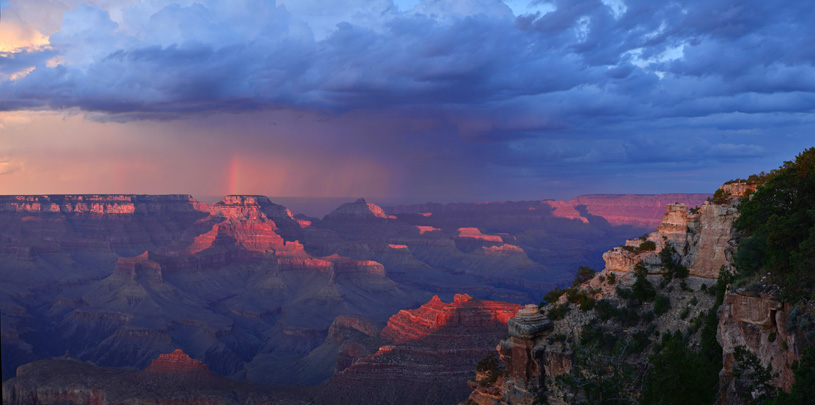
by Amber Reimondo, Energy Director
A uranium mine near the south rim of the Grand Canyon continues to endanger precious and limited water supplies. Today, the public has a rare chance to speak up about it. The Arizona Department of Environmental Quality has released a draft groundwater permit for the mine, which is currently open for public comment until midnight August 7, 2021, followed by a virtual public hearing on August 9, 2021.
Canyon Mine, recently renamed “Pinyon Plain Mine," has been permitted since the late 1980s, but despite being 35 years old, it has yet to commercially produce uranium ore. The mine operator has, however, dug a nearly 1,500-foot-deep mine shaft that has exposed uranium ore to the elements. The shaft also has been consistently taking on water — 40 million gallons of groundwater and counting — since the company first sunk the shaft deep enough to hit significant groundwater in the Coconino Formation in 2016. The result is an ongoing environmental hazard, requiring constant action by the mining company to pump out water contaminated with high levels of uranium and arsenic into an on-site wastewater pond, where the company sprays it into the air, too often allowing it to drift beyond the mine’s fence line and into the Kaibab National Forest.

Canyon Mine is especially concerning to the Havasupai Tribe. For starters, the mine sits withing the Red Butte Traditional Cultural Property, a sacred site for the tribe. Tribal members have reported that they no longer collect medicinal plants in the area for fear of exposure to radionuclides. The turquoise-blue waters of Havasu Creek that flow through Supai Village and create magnificent waterfalls are the product of Havasu Spring, which flows from the Redwall-Muav Aquifer. The aquifer underlies Canyon Mine along with much of the Grand Canyon’s north and south rims and it’s the source of a number of precious Grand Canyon springs in addition to Havasu Spring. These waters are critical to the people of Supai; they’re the village’s primary source of water and the tribe’s namesake — Havasupai or Havasu ’Baaja means “people of the blue-green water.” The creek also creates a world-renowned destination for outsiders who pay fees to the Havasupai Tribe every year for coveted permits to visit, camp, and swim in the falls.
 MIKE POPEJOY
MIKE POPEJOY
As climate change unfolds, the Southwest is only getting hotter and dryer. Frivolous threats to fragile water resources, like those posed by an unnecessary uranium mine near the Grand Canyon, should not be tolerated.
Please urge the Arizona Department of Environmental Quality to deny the groundwater permit for operation of the newly renamed Pinyon Plain Mine, and to issue a groundwater permit only for the immediate closure and cleanup of the mine. At a minimum, any permit that is issued should require:
80% of Arizona voters support Baaj Nwaavjo I'tah Kukveni National Monument, according to a new poll.
Read MoreThe Colorado River below Glen Canyon Dam is heating up. Find out why.
Read MoreGroundwater pumping at a uranium mine near the Grand Canyon will affect the canyon's springs, scientists says.
Read More